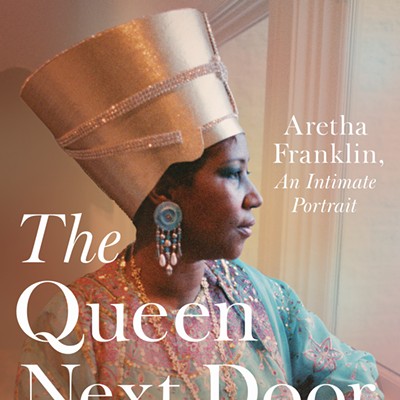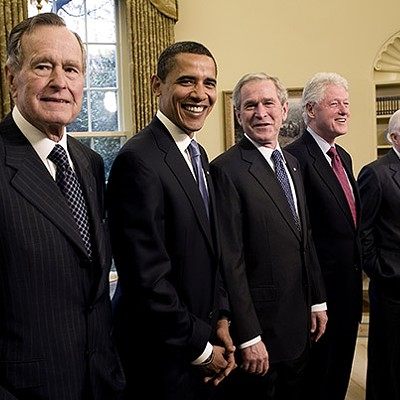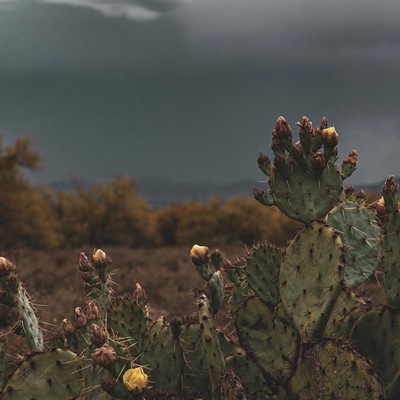"It was just brilliant," said Nickel, who left his job as curator at San Francisco a year ago to become director of the Center for Creative Photography.
The thesis, about Victorian England's mania for the hand-held device that merges a double picture into a single 3-D image, was written by Britt Salvesen for her doctorate in art history at the University of Chicago. Nickel contacted Salvesen's professor, Joel Snyder, who declared that she was the "most brilliant student he'd ever had," Nickel remembers, and that "she really wants to be a curator."
Nickel tucked the information away, and a half-dozen years later was delighted to find Salvesen among the applicants for the curatorial post at the center, a job vacated more than two years ago by Trudy Wilner Stack. One of some 80 contenders for the position, Salvesen accepted the job last week and expects to report for duty in mid-September.
"It's definitely an exciting opportunity for me," Salvesen said by phone last week from Milwaukee, where she has been curator of prints, drawings and photographs at the Milwaukee Art Museum for the last year and a half. "It will be hard to buckle down and do deskwork when there are so many things to look at" in the center's collection of 80,000-plus works by seminal 20th-century photographers.
The candidates hailed from all over the United States and abroad, Nickel said. They were vetted by a search committee that included CCP staff members Amy Rule and Cass Fey, art professor Harold Jones, UA library representative Janice Simmons-Welburn and Nickel himself.
Salvesen laughed when told of Nickel's praise. "I was very flattered to be in one of his footnotes (in his Watkins book)," she said modestly. "He and I share an interest in the 19th century."
The new curator said she had not closely followed the turmoil that wracked the center for years prior to Nickel's arrival. That power struggle between the staff and the UA Dean of Libraries, Carla Stoffle, left the center without a director for three years and without a curator for two; numerous other positions were also left empty by fleeing staff. Curator Wilner Stack resigned a year after Stoffle fired the previous director, Terry Pitts. A Yale-trained scholar and talented writer, Stack had staged a decade's worth of critically acclaimed exhibitions.
"I learned about (the problems) retrospectively," Salvesen said. "It seems like a new chapter now, with Doug on board. I sensed a positive feeling there on visits. The morale is good, and the staff is enthusiastic."
Nickel said he is now almost up to full staff, with a development officer hired last winter, a publicist expected to come on board soon and a publications director to be hired next winter. Ironically, as the center starts to right itself, the university's other major art institution, the UA Museum of Art, is stumbling along without a curator; director Charles Guerin did not renew longtime curator Peter Briggs' contract, and Briggs left at the end of June.
Salvesen was attracted to the CCP curatorial position by "the uniqueness of the center," she said. "It has so much overlap in one place of so many of my own interests and so many features of photography also. It has an archive and prints; it's within a university, and within a university library. There are so many great possibilities for interaction among students, researchers and conservationists." That complexity, she added, "so well reflects the history of photography."
Her husband, painter and printmaker Brian Yates, will re-locate with her to Tucson, where he hopes to teach as an adjunct in the UA art department. Until she's had a chance to study up on the center's holdings, she said, she can't say which exhibitions she intends to mount.
"I'll need to wade into its vast resources. I'll be a kid in a candy shop."
But she plans to strike a balance in her exhibition program, she said, between scholarly and popular shows, between past and present photography, and between the center's own collection and new work. One of the earlier clashes at the CCP centered on a contention by John Schaefer, the former university president who helped found the center with Ansel Adams, that the previous staff neglected older works in the collection in favor of contemporary photography. (His argument notwithstanding, a numerical tally of exhibitions in those years reveals a parity between shows of contemporary work and shows of the center's own treasures.) Some artists have feared that the departure of the previous staff would signal the beginning of a conservative, all-Ansel-all-the-time format.
Salvesen said that a well-balanced exhibition program "would alleviate that concern. My answer is we will do both. Fantastic shows could combine existing material (from the collection) with recent current work," not unlike the Emmet Gowin show of last December. That fine exhibition paired the living artist's work with photographs by his mentors, Frederick Sommer and Harry Callahan, both of whom are strongly represented in the collection.
A Wisconsin native of Norwegian extraction, Salvesen got her undergraduate degree at Trinity University in San Antonio. When she went to London to get her master's at the Courtauld Institute, she landed an internship at the Victoria and Albert Museum.
That museum "has a great photography collection, from Fox Talbot (the 'father of photography') to contemporary. I got hands-on experience that was so seductive."
Returning to the United States to work on her doctorate at the University of Chicago, Salvesen won two prestigious fellowships--a Rhodes Curatorial and a Paul Mellon. She settled on a study of the Victorian stereoscope because "it allowed me to do cultural history, not just a study of an individual photographer. Those who emerged (in the stereoscope field) were more businessmen. It was almost a Dickensian world."
After earning her doctorate, Salvesen spent 10 years working as an editor of scholarly publications at the Art Institute of Chicago, editing books about such artists as Van Gogh, Gaugin, Moreau and Whistler.
"It was a great job that put all my skills from graduate school to work," she said. "I believe in museum publications. I can bring that to the center."
Salvesen shifted to a curatorial position at the Milwaukee museum just a year and a half ago.
"Their photography collection is not huge, but it's well-collected. It's especially strong in American photography of the 1960s, '70s and '80s. The key figures are represented."
Her exhibition of '70s photographers from the collection, showcasing Lee Friedlander, William Christenberry, Linda Connor and others, will open in October. She also curated a show of Danny Lyon's Bikeriders photographs, attracting visitors from a Harley-Davidson rally ("they were very well-behaved," she joked), and coordinated a traveling show on Brandt and Weston. Her exhibitions outside photography included one of 17th-century French prints and another of German Expressionist prints.
Salvesen's years of direct curatorial experience may be scant, but her scholarly approach to the discipline meshes well with Nickel's plan to make the center a major university research center for the study and exhibition of photography. She is co-editor with her old prof Snyder of a forthcoming "sourcebook" on the history of photography, and she has taught both at Columbia College and the University of Chicago.
At the UA, "I'd like to have the opportunity to teach," she said. "I'm attached to the academic environment."
The move to hot Tucson from cold Milwaukee will be a "big change," she acknowledged. But she thinks Arizona's long summers may be no more difficult than Wisconsin's long winters.
"I didn't expect to come back to the Midwest, and I didn't expect to live in the Southwest, either! But on my visits to Tucson, I became intrigued with the environment."














